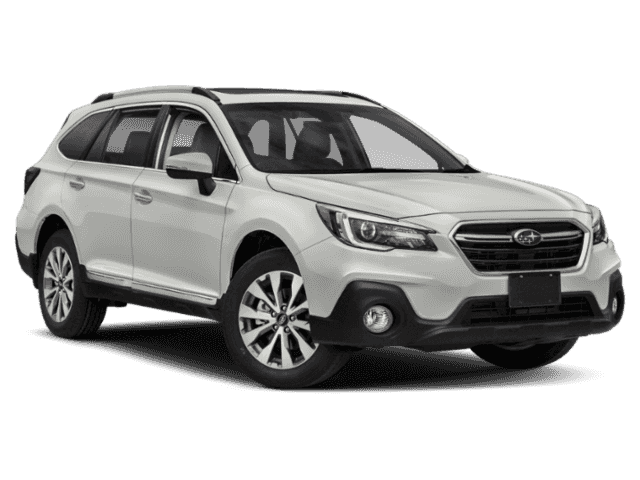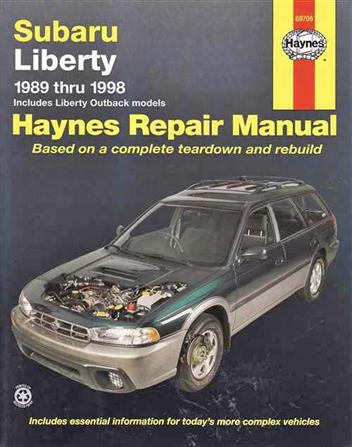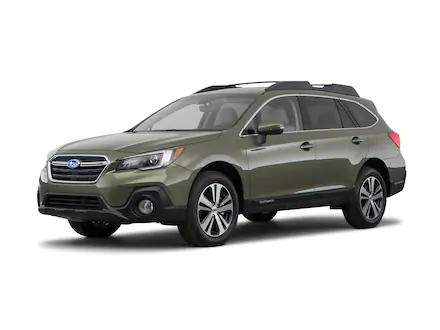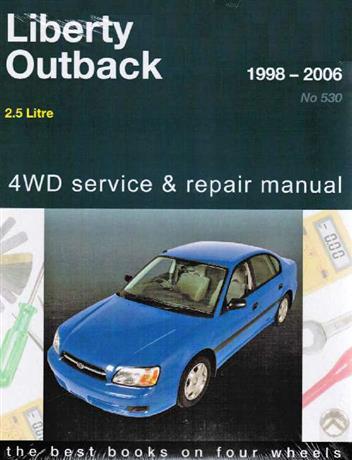Subaru Liberty inc Outback 1989 1998 Haynes Service Repair Manual
Subaru Liberty (including Outback) 1989 - 1998 Haynes Workshop Owners Service and Repair ManualGet Other Subaru Car Repair Manuals click hereNEW softcoverSubaru Liberty (inc Outback) 1989 - 1998 Haynes Owners Service & Repair Manual covers: All models and Covers 2 Wheel & 4 Wheel Drive Models. |
The Subaru Legacy is a mid-size automobile built by Japanese automobile manufacturer Subaru since 1989. Part of the original design goals for the Legacy model was to provide Subaru a vehicle in which they could compete in the lucrative North American midsize market against competitors Honda Accord and Toyota Camry. Higher performance variations of the Legacy are offered as competitive alternatives to compact executive vehicles such as the Audi A4, Alfa Romeo 159 and BMW 3 Series. The Legacy also serves as Subaru's flagship car.In 1996, a variant of the Legacy with heightened suspension called the Legacy Outback had been introduced to compete in the burgeoning sport-utility vehicle class and proved to be a sales success for Subaru. The Outback line was split into its own model in 2000, known as the Subaru Outback.It's unique in its class for offering all wheel drive as a standard feature, and Subaru's traditional boxer engine. The Legacy bears the name Liberty in Australia out of deference for Legacy Australia, a veterans' assistance organization. As of 2008, 3.6 million Legacies have been built since its 1989 introduction. The introduction of the Legacy was a notable departure from Subaru items in the past. The Legacy was formally released January 23, 1989 in Japan, with an introductory cost of �2,550,000 for the turbocharged RS (approx. USD ,800 at 1989 yen exchange rate). The very first Legacy was available at Japanese dealerships on February 1, 1989, with worldwide distribution beginning in 1990.
Subaru had earned a reputation of building vehicles that were regarded as other and quirky Asian manufacturers were bringing more conventional and upscale appearing models to the market. The Legacy broke with numerous Subaru traditions, these types of as no longer locating the spare tire in the motor compartment, behind the engine and above the transmission, a tradition started with the 1966 Subaru 1000. The Legacy was an all-new model, and positioned above the Justy, Leone, XT, and kei cars Rex and Sambar in Subaru's model range at the time. The Legacy also introduced an entirely new flat-4 engine series, called the Subaru EJ engine, which was quieter and more powerful than the earlier Subaru EA engine.The DOHC 2.0 liter turbocharged 217 bhp (162 kW; 220 PS) EJ20G motor was introduced in the Japan-spec Legacy RS, RS-RA and GT in 1989 and later used in the Impreza WRX when it was introduced to Japan in 1992. International versions of the Legacy turbo were offered the DOHC 2.0 liter engine with a water-cooled intercooler starting with 1991, with a manual transmission only in the RS-RA and RS version, the GT variation was available with an automated transmission.
The USA-spec EJ22T SOHC 2.2 liter 163 bhp (122 kW; 165 PS) turbo was not provided with an intercooler when it was introduced in 1991 as the Legacy Sport Sedan, and was available with either a manual or automatic transmission. In 1992, the Legacy Touring Wagon made its debut, but was only available with an automatic 4-speed transmission. Both turbo models, the Sport Sedan and Touring Wagon, had upgraded components. Brakes had ventilated rotors both front and rear with ABS standard, a 4EAT automatic transmission capable of handling the additional turbo's energy, thicker sway bars, and wider tires were some of the included performance improvements. Turbo models were just available with AWD.The Legacy began with a 5-door wagon or 4-door sedan body styles with FWD and an optional full-time AWD package, and was introduced in North America, the UK, Germany, the Benelux region of Northern Europe, Japan and Australia. Options included 4-channel ABS, licensed from Bosch and air suspension height control, which lowered the automobile at speeds above 50 mph (80.5 km/h), and also allowed the driver to increase the vehicle's ground clearance for off-road conditions.The USA-spec included the passive restraints (motorized chair belts) through the 1994 model year with exception to the right hand drive Postal model which was only available with conventional seat belts. Driver's side airbags were an option midway through the 1992 model year and became standard in 1993. Passenger airbags weren't available until the 2nd generation arrived in 1995.
2nd generation sales in Japan began October 7, 1993, and an introductory price of �2,753,000 for the twin turbo GT (approx USD ,250 at 1993 yen exchange rate), with an introduction for model year 1995 in North America with a full body and chassis revision. The exterior was designed by Olivier Boulay, who was employed by Subaru on a short-term basis. The tail light appearance on both the sedan and wagon had been influenced by the taillights on the SVX. In 1996, Subaru decided to make AWD standard equipment in all vehicles produced for the North American market from that year to 2012. Subaru still provided a choice between FWD and AWD for its domestic market vehicles for this generation. The increased ground clearance Outback was introduced with this generation in 1995 with AWD only internationally, and the atmosphere suspension with height control was no longer offered.USA-spec GT models, first offered in 1990 as a turbocharged wagon or sedan in Japan, and as a trim package for the USA version in 1994, became a top level model upgrade in 1996, utilizing the new EJ25D DOHC 2.5 L naturally aspirated engine. "Limited" trim level editions were introduced, providing heated leather, or cloth, seats and trim and a tinted, glass moonroof. The term "Limited" appeared on the "GT", known as the "GT Limited" in 1998. The term "Limited" was used by itself on the Outback in 1998. Driver and front passenger airbags had been added with the redesigned interior as standard equipment in accordance with USA Federal Government regulations. 1999 marked the 30th anniversary of Subaru in America, and the final of the second generation in North America. There had been a special 30th Anniversary Edition offered in the USA with upgraded inside and sunroof, spoiler, alloy wheels on the "L" trim level cars. The USA-spec "Brighton" trim level also carried over from the facelifted first generation version that was priced below the "L" trim option.
In Japan, the GT spec B was introduced in 1994 with stiffened and lowered suspension and a higher performance back differential. The next generation of the GT-B was introduced June 1996, with the front and back struts supplied by Bilstein, with the update also available on the RS. The "B" designation stood for Bilstein. Turbocharged versions proceeded to be available in markets that used right hand drive configurations. Specialty touring and racing versions were offered in Japan, as well as the DOHC 2 liter twin sequential turbocharged EJ20H version on both the Legacy GT sedan and wagon with an automatic the RS and transmission sedan and GT-B wagon with the EJ20R and a manual transmission and a somewhat higher horsepower rating, both identified since "Boxer 2-stage Twin Turbo" on the engine cover shroud.
Subaru Liberty (including Outback) 1989 - 1998 Haynes Workshop Owners Service and Repair Manual 1990 1991 1992 1994 1995 1996 1997

 0 Items (Empty)
0 Items (Empty)





 >
>